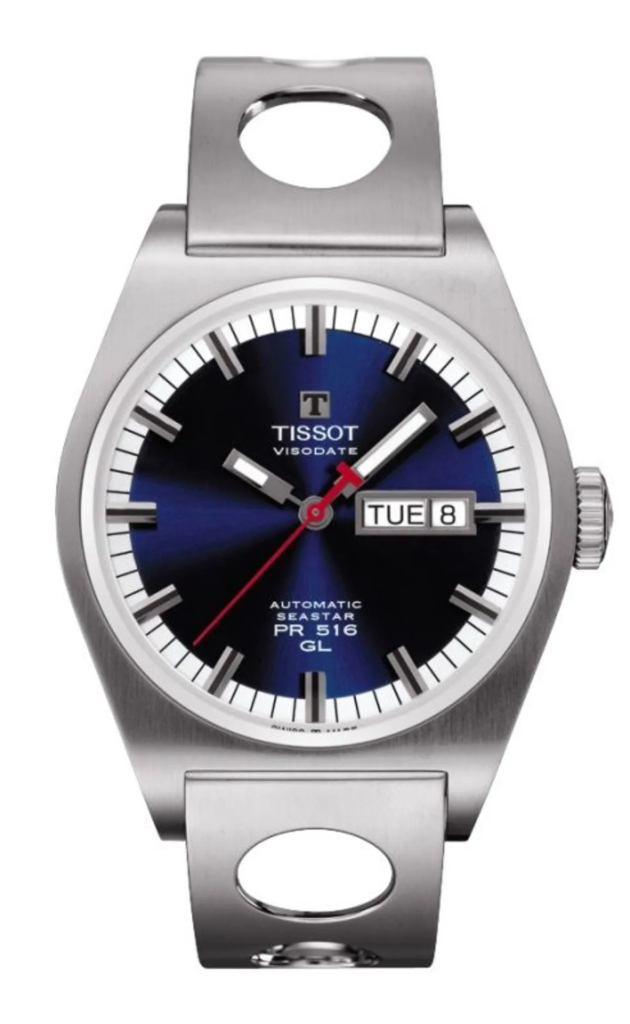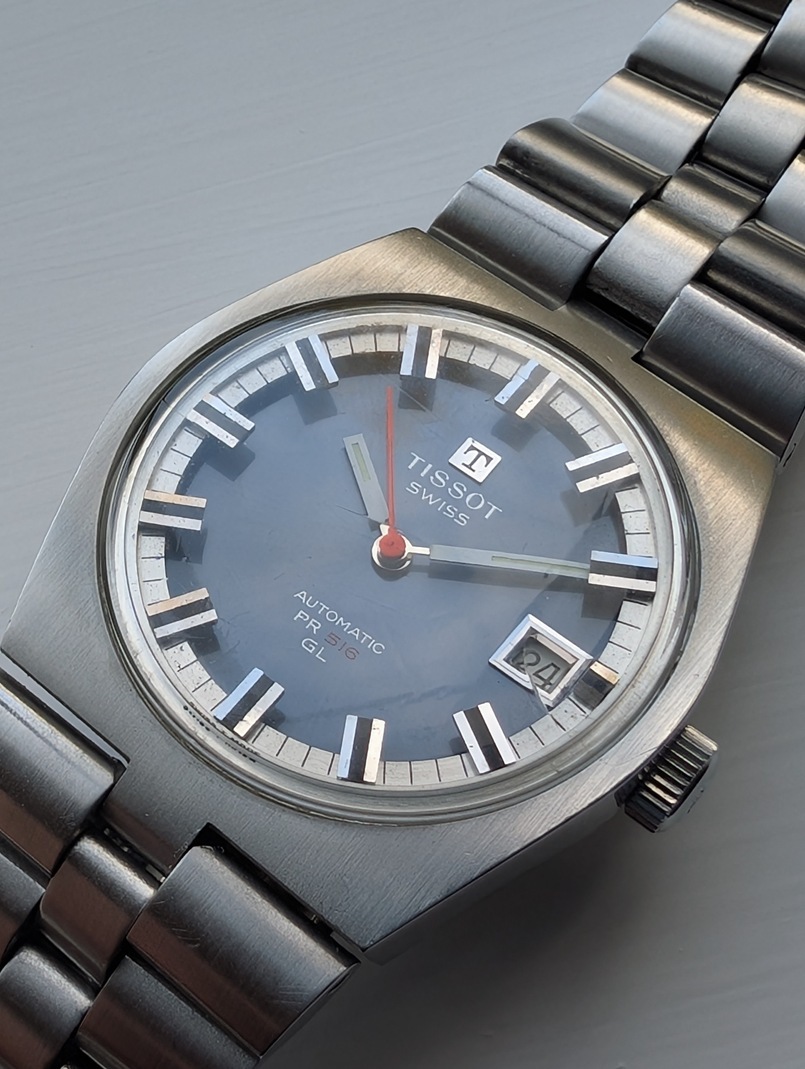Hello again. I’m back with a recent-ish pick-up which scratched an itch I’ve been supressing for years – the Tissot PR 516GL.
These are really not expensive for what you get – I think I passed up one a few years back that was in great shape but the dealer wanted about £400 for it, which felt a bit steep at the time. The going rate for a good one now is certainly in the £200-300 range, though as ever, you get the odd chancer looking for a lot more.
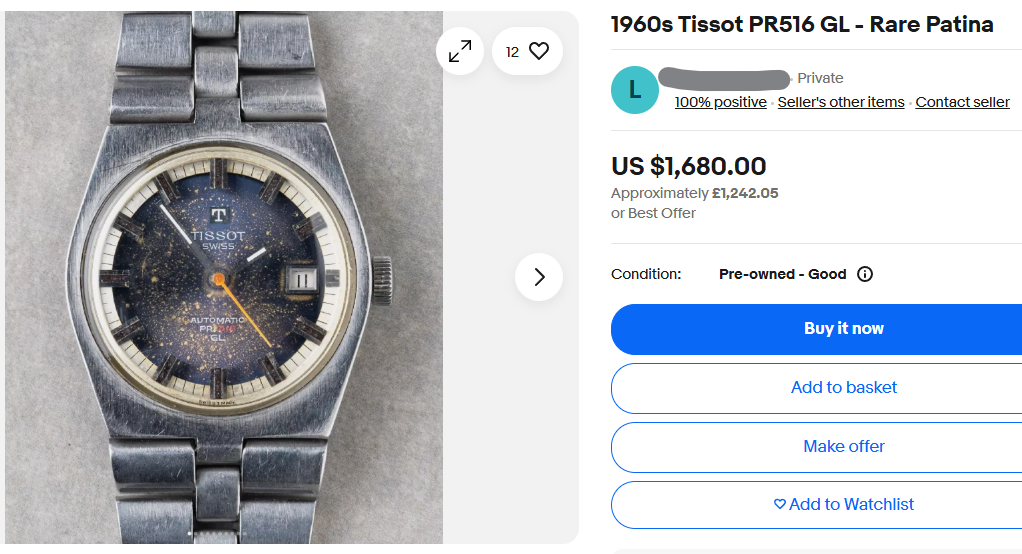
no pal, it’s not “rare patina” – the dial is shot TF
I’ve been getting distracted by vintage Tissot for a good while now – they’re remarkably good value compared to lots of comparable watches, and yet they’re (generally) very well made. The “PR” reference (variously PR-516 or just PR 516) that showed up in the late 1960s even stands for “Particularly Robust”. The PR attribution is somewhat according to legend, but it’s referenced in a Fratello article (about the Roger Moore connection with the PR-516 diver), regarding a Tissot History book by Estelle Fallet, curator of Horology at Geneva’s Museum of Art & History so let’s assume there’s something in that.
Here’s the new arrival – a PR 516 GL ref 44672-3X from 1971. It is in pretty good shape (at least the case brushing and bracelet are pretty good – the bracelet was quite dirty inside the links but the watch is running OK and everything is in good shape). The one exception was the acrylic crystal, which had a quite a few scratches, particularly noticeable in the sunshine…
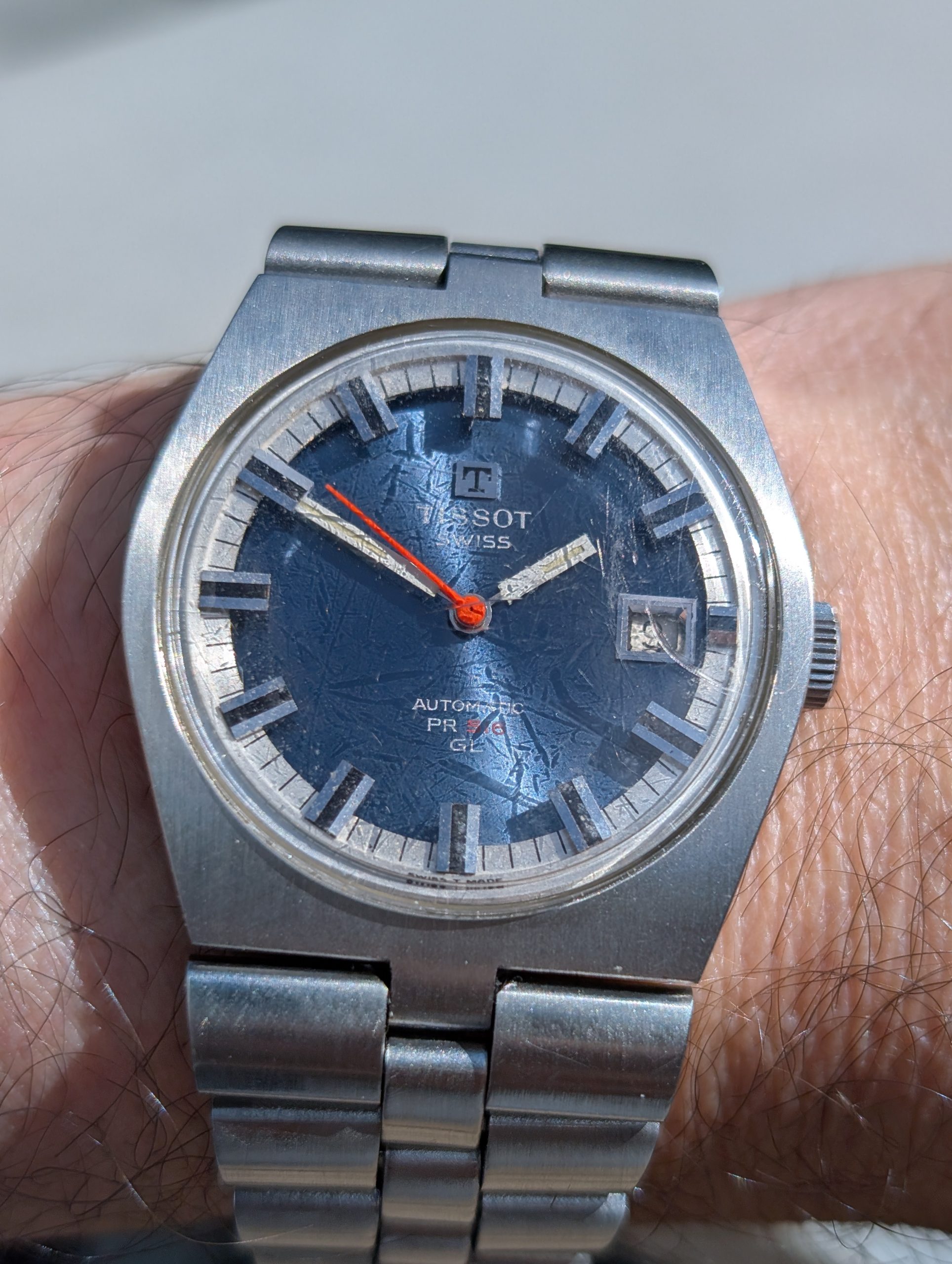
A good going-over with Polywatch was enough to clean it up fairly well; there are still a few scratches on it but none that really jump out when it’s on the wrist.
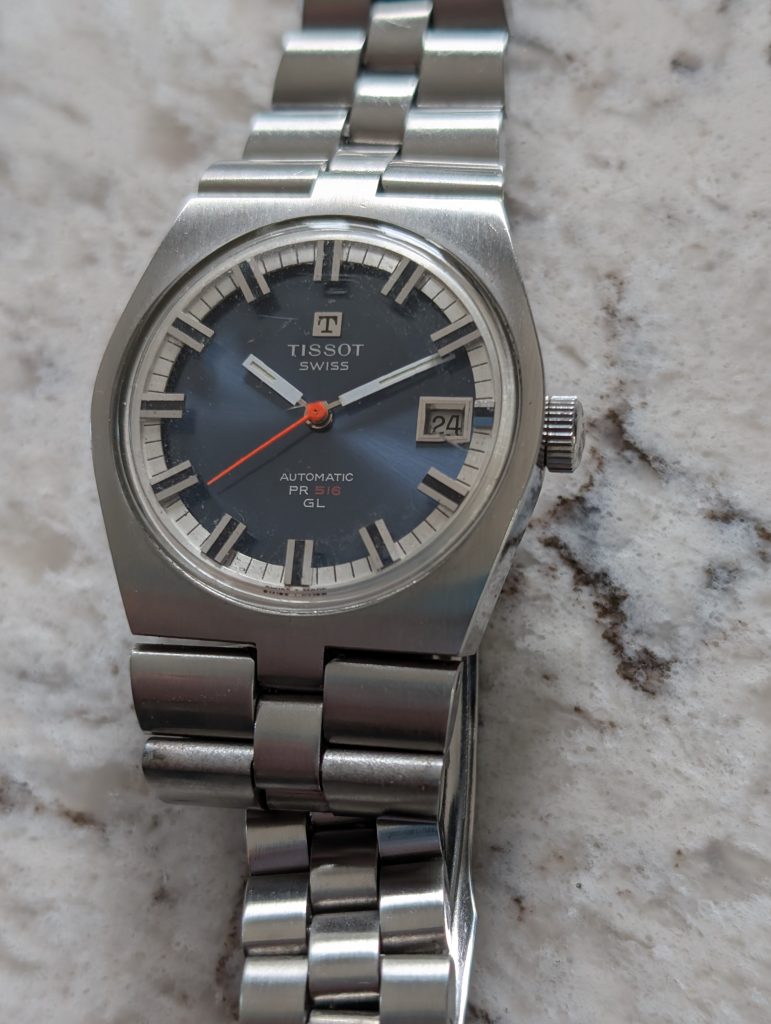
The dial is a lovely sunburst blue finish but the key thing about this particular watch is the layout of the indices – apart from its “integrated bracelet” that became a very popular design in the 1970s, though did somewhat restrict what you could do with the watch (as you’d need a notch to be cut in any strap). Look closely, and you’ll see that the minute hand actually goes under the hour indices, which themselves are attached to the minute bezel and “float” above the dial, just under the surface of the crystal. It gives the watch a lot more depth.
The watch came to me in a black “travel case” which I know is also what Tissot would use for a service, so I suspect it has been serviced at some point (though you’d think they would have replaced the crystal…). Maybe it was serviced a few years ago, was worn a lot and got nice and dirty and scratched up, then sold at auction. Aside from the wrist cheese inside the bracelet links, it’s good – a nice, President-style bracelet with fliplock clasp. the clasp blades identify it as 2167-40640.
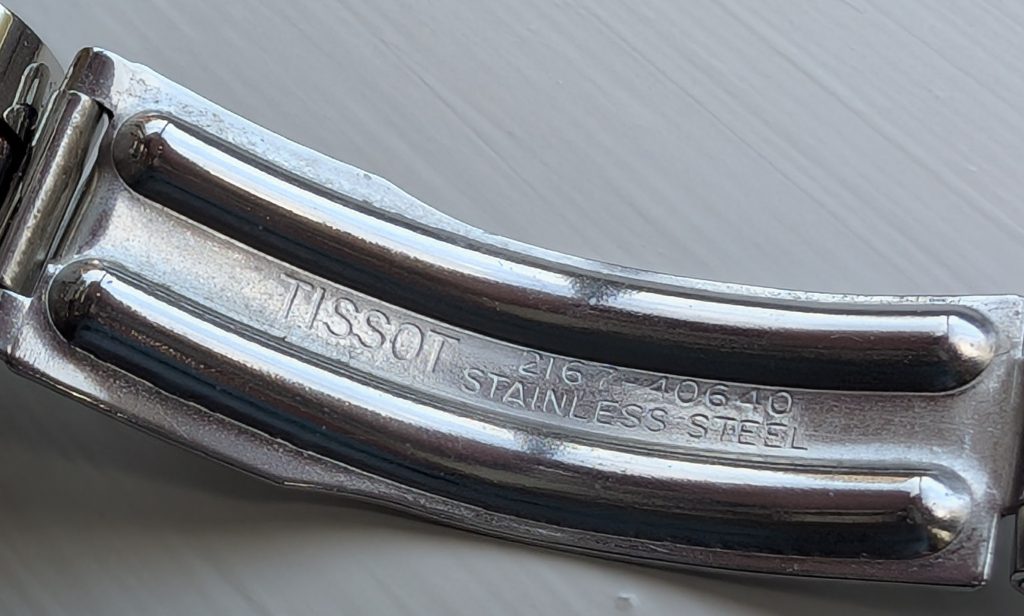
…and the outer clasp might have had some black enamel surrounding the T, but no longer. The case back is the same “nowhere to grip” style that was the same as the original Tissot PR-516 chronograph I got, which I couldn’t open (nor could the watchmaker I took it to), so was the inspiration for How to remove the stuck back of a watch.
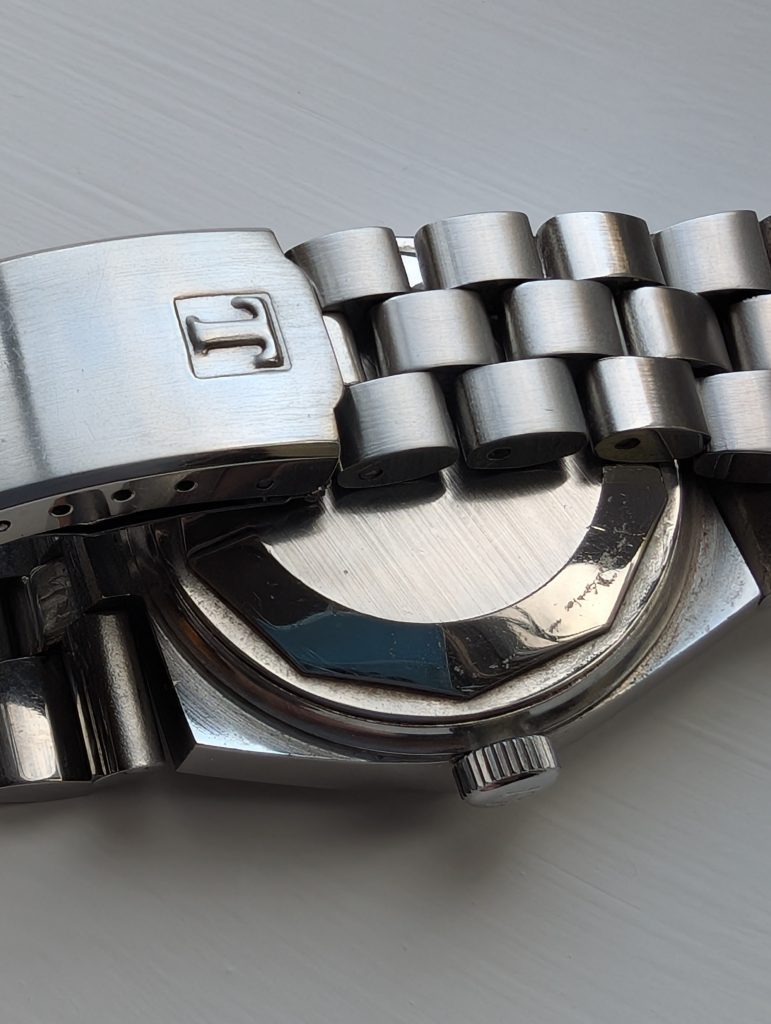
Tissot also made Day and Date versions of the same watch (reference 46672, like this – that second digit appears to signify the day vs day/date feature – the date-only “Roger Moore” Live & Let Die watch is a ref 44622 and my day/date version is 46622). You’ll typically see the Day/Date version in advertising photos (as shown below) and they maybe were more popular (and a little more expensive) but I like the subtlety of the Day-only version better.
Serial numbers
According to the Tissot Serial number lookup on Horological Underground, my watch (serial number 13,963,xxx) would date it to late 1971.
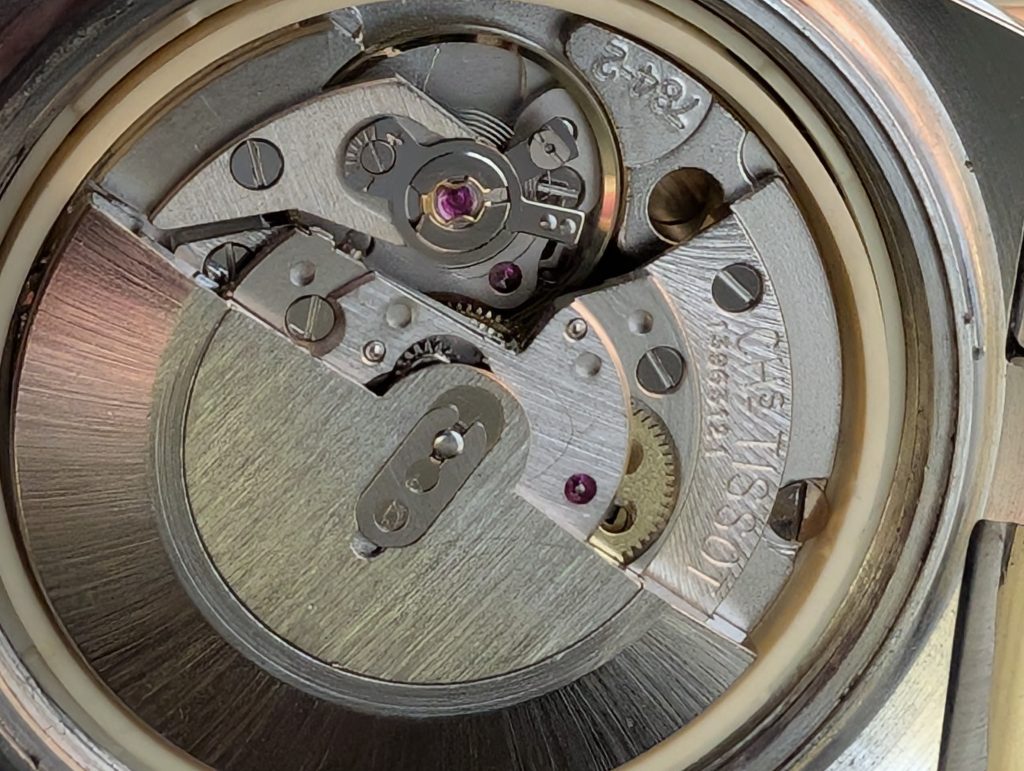
The serial numbers in the relatively early watches of this reference are etched on the movement, along with 784-2 showing the movement reference. The 784 is a fairly workaday movement, with numerous versions – including the 794 that has day and date.
Here’s an example of a post-1972 serial number, where it and the movement details are shown on a “button” instead of being etched – it’s from a 1976 PR 526 GL watch, using what Tissot called a 2930 movement (based on an Omega 1012 calibre). Since it’s not my watch, I’ve partially obscured the serial but you get the idea…
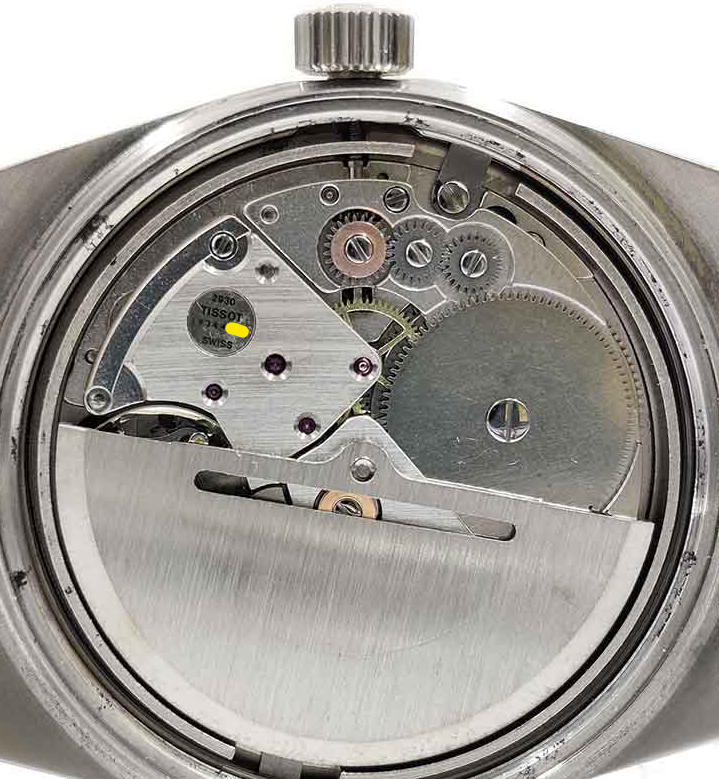
History of the PR 516 GL
As we can see with various shaped and sizes of watches with manual or automatic, chronograph or alarm movements, which were given the PR-516 moniker, it was well-used. They turned to advertising watches to appeal a dynamic, young, sporty buyer, perhaps in contrast to a lot of the more staid Swiss (like sister company, Omega).
One version from the late 60s had a regular set of lugs and was often paired with a solid steel bracelet with circular holes. Not unlike the kind of thing Bruce Lee chose to wear with his Seiko, this must have been a fashionable thing at some point…
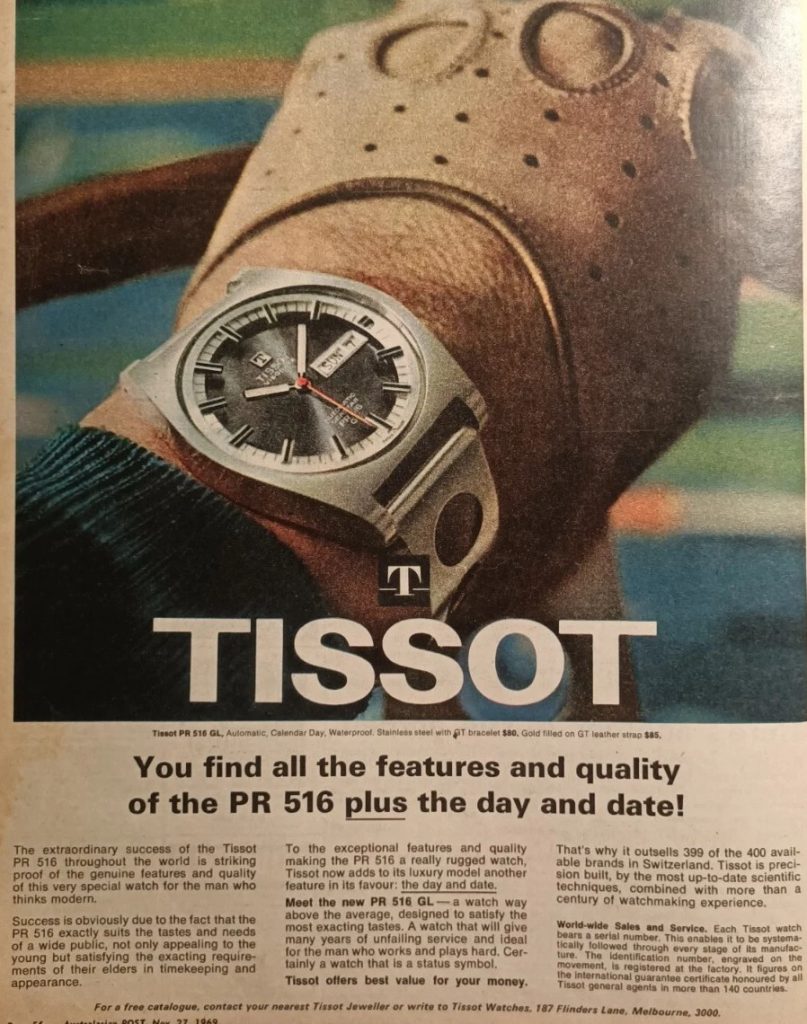
Ad from an Australian magazine, November 1969. Driving gloves maketh the man.
The “GL” stood for “Grand Luxe”, at least according to this ad from 1971:
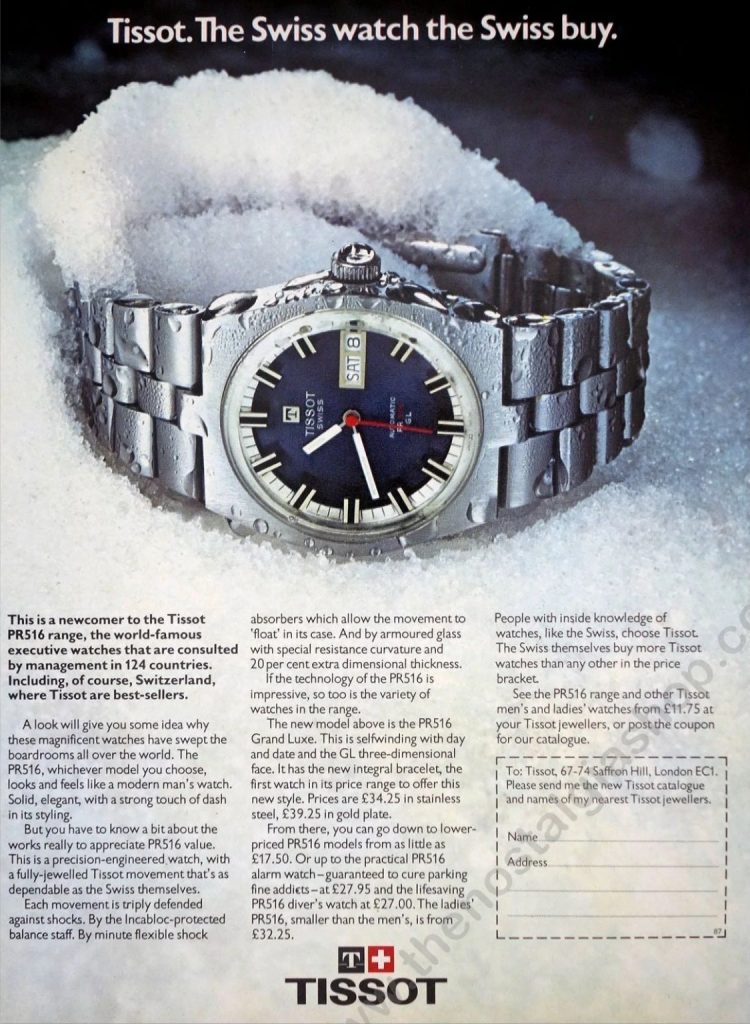
… and another from 1971…
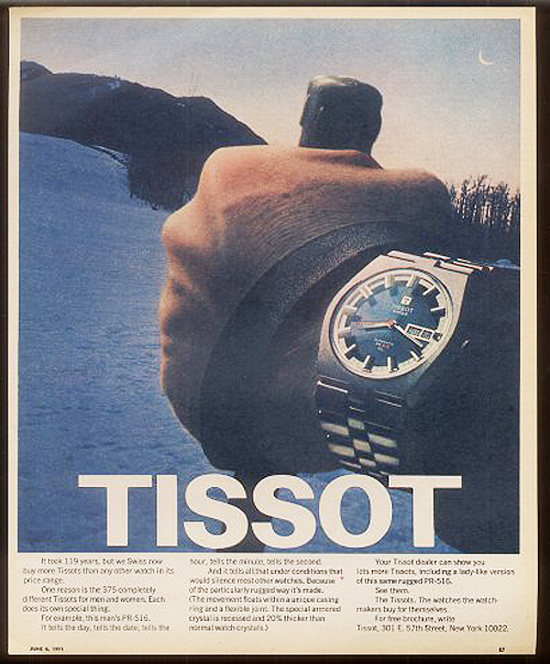
Ad from a June 1971 magazine. I’m guessing he’s a skier, wearing his Tissot back to front on his left hand…
The PR 516 GL also had other versions – like a gold plated one, with brown dial. Very 1970s – silver dial and maybe others followed too. There was a PR 526 GL which came along later, with what looks to be a flatter bracelet and also had options of different dial finishes – from brushed green to others.
There was a lot of crossover between Tissot models in the 1970s – Visodate, Seastar and PR-516 sometimes referred to different models and sometimes were combined on the same dial. Tissot thought they’d cash in on the retro (Particularly Retro, maybe?) and issued a load of “heritage PR-516” watches which also said VISODATA and SEASTAR on the dial… Family complete! – Tissot Heritage PR516 GL | WatchUSeek Watch Forums
The closest modern reissue was ref T071.430.11.041.00 from the early 2010s, which looks pretty similar except that second hand extends into a “T” ending and the hands don’t move under floating indices any more (boooo).
